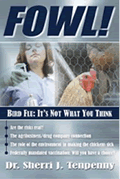Other Guest Articles:
Jury Rights! Jury
Nullification
Constitutional
Tools No
Longer Valid
THE EVOLUTION OF HOMEOWNER ASSOCIATIONS
By Shu Bartholonew
August
20, 2006
NewsWithViews.com
A conservative estimate has it that one in six Americans, or over 57 million people live in some 270,000 mandatory membership common ownership developments across the country. These include condominiums, cooperatives, townhouses and single-family homes that are all part of a homeowners� association. Those numbers keep growing.
Today, over half of all new housing built nationally is part of an association. However, many municipal jurisdictions mandate HOAs so in those towns, cities and counties virtually all new housing includes automatic membership in an association. In fact, in some of the fast growing areas of the country it is impossible to buy a house that does not include an association of some sort.
Contrary to the glossy ads promising carefree living, recreational amenities for pennies a day and the promise of protected and enhance property values, far from an asset, HOAs are a liability.
The first thing housing consumers should understand is that associations were never intended to benefit them. They benefit municipal governments, builders/developers and the growing industry that feeds off associations. This $30 billion annual industry includes managers, attorneys, landscape companies, pool companies, CPAs, insurance companies and now, banks as well.
One of the main purposes of an association, and the reason they are required to be part of all new construction in many parts of the country, is that of a vehicle for local governments to shunt their responsibilities off onto the private sector, while still taxing the citizens � at the full rate. What this means for the taxpayer, homeowner and voter, is that they are not only double taxed but also living under the auspices of another layer of government � a private government � one that is not bound by the protections afforded in the Constitution.
Because homeowners associations are �private� enclaves, developers can increase density, thus building- and selling - more units than would otherwise be permissible. Moreover, since the streets, sidewalks, lighting and other facilities will be maintained privately, they are not always built to code. Since substandard construction is considerably less expensive, this maximizes the builders� profits but saddles the homeowners with the cost of maintaining expensive infrastructure that all too often breaks down.
Another equally important fact to keep in mind is that failure by the association to properly maintain the common areas will adversely affect property values. Furthermore, unfunded future repairs and replacements could easily result in enormous special assessments. Special assessments of $10,000, $20,000, $50,000 even $90,000 are not unheard of. Associations have the power to foreclose to collect these assessments.
However, the physical condition of the common elements of the association is not the only thing the homeowners are left holding the bag on. Because associations are private entities, local governments and law enforcement are reluctant to get involved in the event of problems. Citizens who seek protection from their elected and appointed officials for illegal actions are often told that their problems are civil matters to be litigated in court, since they occurred on �private property�.
Homeowner�s associations enforce enormous powers � powers real government can only dream of having. These powers, and their abuses by boards and management often lead to arbitrary rules that give the governing committee power over property owners. For example, recorded deed restrictions have gone from as few as one page to hundreds of pages long, controlling everything from the weight of a dog to the exact shade of white of the interior window treatments. Along the way, some associations have even taken it upon themselves to approve reading material and clothing articles kept on the premises. As completely ridiculous as this may seem, newspaper archives and court records are full of such stories and cases.
And state legislators, at the insistence of the homeowner association industry, amend state statutes increasing the powers associations already enjoy. The most heinous of these laws are the statutory power to fine and then to foreclose, in some states, to foreclose non-judicially. In the absence of any adult supervision and oversight, these powers are being misused and abused on a daily basis.
Consider the case of Wenonah Blevins, an 82 year old Texas widow, whose mortgage free $150,000 house was sold on the courthouse steps for $5,000 to satisfy an $814 assessment. What is so incredible about this case is that Mrs. Blevins had remitted a check for the full amount shown on her bill from the association but the association refused to accept her payment, preferring to foreclose instead.
|
Subscribe to the NewsWithViews Daily News Alerts! |
There are many myths and misstatements associated with this type of housing. Do not be fooled by the glossy ads promising carefree living, enhanced property values, recreational amenities and yes, even romance. The reality is very different. It means giving up part of the American dream. It means leaving the American zone.
� 2006 - Shu Bartholonew - All Rights Reserved
Sign Up For Free E-Mail Alerts
E-Mails are used strictly for NWVs alerts, not for sale
Shu Bartholomew hosts an online radio show called �On the Commons� dedicated to exposing the problems of Homeowner�s associations.
Website: Onthecommons.com
E-Mail: info@onthecommons.com
Consider the case of Wenonah Blevins, an 82 year old Texas widow, whose mortgage free $150,000 house was sold on the courthouse steps for $5,000 to satisfy an $814 assessment.











